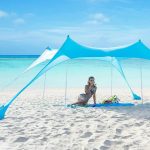You’ve seen it on TV and maybe even talked about it with your friends. But what does snowboarding really involve? Similar to mountain biking, most people probably have a fuzzy idea of this action-packed, adrenaline-inducing sport that involves hurtling down a hill at breakneck speed with just one plank of wood between you and an icy death drop. If you want to learn more about this unique winter activity, let me help you with some crucial snowboarding tips. Below you will find some pointers that will help you hit the slopes like a pro while minimizing the risk of injury along the way.
Get the Right Snowboarding Equipment

Your first snowboarding experience can be both thrilling and nerve-wracking. Your excitement at the thought of doing a new and enjoyable activity shouldn’t be dampened by your fear. Taking the time to make sure you’re prepared will ensure that your first-time snowboarding is a memorable experience that will leave you wanting more.
Check out the available snowboard gear online and equip yourself with the snowboarding basics! You can find high-quality and durable snowboards, bindings, snowboard bags, goggles, as well as durable waterproof snowboarding apparel. They will be with you every step of the way, from your first snowboarding trip until becoming a master of the slopes.
What to Pack?
This snowboard gear checklist will guarantee that you are properly equipped for your snowboarding adventure:
- Snowboard and bindings – There are many different types of boards that fit different boarding styles, so make sure that you choose the right one for you. The bindings, on the other hand, help to attach your boots to your board.
- Snowboard boots – These boots are precisely made to conform to your feet. They should be snug, but not so tight that they hinder your movement.
- Snowboard socks – It’s best to choose thin, synthetic, and moisture-wicking socks since your boots already have insulation. Make sure that they’re high enough so that your boots can’t rub and irritate your skin.
- Safety equipment (helmet, goggles, gloves).
- Snowboard pants and jacket – The ideal jacket and pants for snowboarding should be breathable and weatherproof.
- Base and mid layers of clothing – Avoid cotton clothing since it isn’t waterproof. Synthetic fabrics, such as wool, are good in wicking sweat and keeping the body at a reasonable temperature.
How to Choose a Snowboard?

Out of all the snowboarding gear, choosing the proper snowboard is the most difficult task. Finding the right snowboard for you boils down to having the correct width, and length, and understanding what sort of terrain you intend to ride on. Getting these criteria right will help you take your riding to the next level.
Size
Your snowboard’s length will be determined by your body weight and the sort of riding you intend to conduct. Traditional snowboard size used to be that you stood next to the snowboard and if the top of the snowboard met your chin, it was a good fit. While it is a good place to start, other considerations such as talent level, weight, and board structure all play a role in selecting the optimum board length.
So, unless you’re looking at a volume-shifted board, if you’re going to be largely freeriding, consider purchasing a somewhat longer board for better stability and speed. If you’re searching for a freestyle snowboard, smaller sizes will be simpler to spin and navigate in the terrain park or half-pipe.
Width
When you correctly size the snowboard’s waist width, your snowboard boots will hang over the sides of the board just slightly, but not enough to catch on the snow when the board is on edge. You can provide leverage to the board and regulate pressure with your ankles by extending the toes and heels slightly beyond the edges of the snowboard. If your boots stretch too far over the edge during severe spins, they will strike the snow and cause you to tumble.
Type
What is the terrain like where you will be riding? What is your degree of expertise? You can ride any snowboard on any terrain, however, that way you won’t get the most out of your time on the slopes. In order for you not to get lost in the sea of choices, check out these few popular options:
- Freestyle snowboards – A bit shorter than the rest, they’re ideal for terrain parks.
- Freeride snowboards – They’re ridden in longer sizes and usually have a directional shape.
- All-mountain snowboards – They work well in all snow conditions and terrains.
- Powder snowboards – These are made for fresh conditions and typically have a wider nose with a narrower tail.
- Splitboards – You can break them down into two halves for travelling uphill and reconnect the halves for riding downhill.
Which Mistakes to Avoid While Snowboarding?

Learn how to avoid the most frequent mistakes that beginners make. The snowboard gear online will make your experience more comfortable and enjoyable, but it won’t prevent you from potential falls. There is a lot to learn when you first start snowboarding, and I hope that these three tips will assist you in making fewer mistakes on the slopes:
- Leaning far on your back when turning – This makes it harder for you to turn and you end up falling over. The way to fix this is to try shifting your weight forward and reaching down for the snow. This will make the turn smoother, and your weight will be evenly distributed.
- Turning too quickly – When you try to do this, your body twists up and you can easily fall. Instead, try to control your speed and make your turn bigger.
- Keeping a bent back when doing the toe turn – To avoid falling, do this turn while bending your knees, straightening your back, and centring your hips over your board. As a result, when you begin a toe turn, you apply pressure to your toes with your ankles while turning your head and torso on the peak of the mountain.
So go ahead and try your luck in this fun, adrenaline-inducing sport. Remember to buy snowboard gear that fits your measurements and level of expertise, and try to avoid the common beginner’s mistakes!


